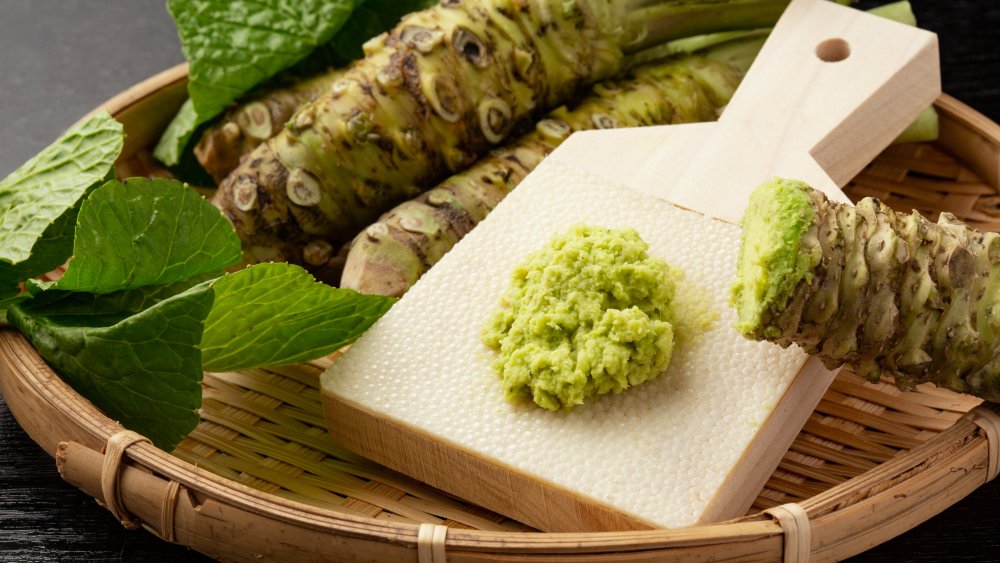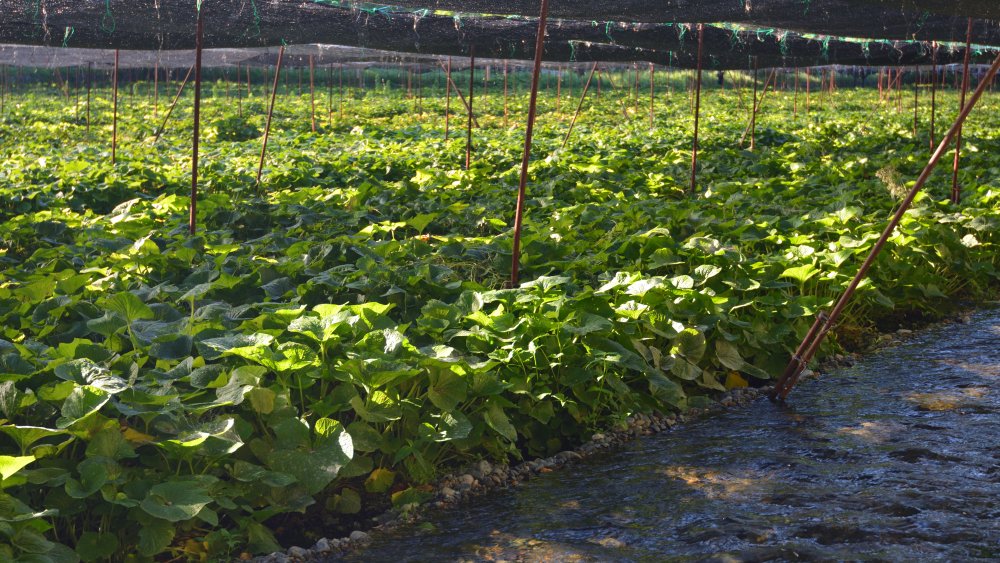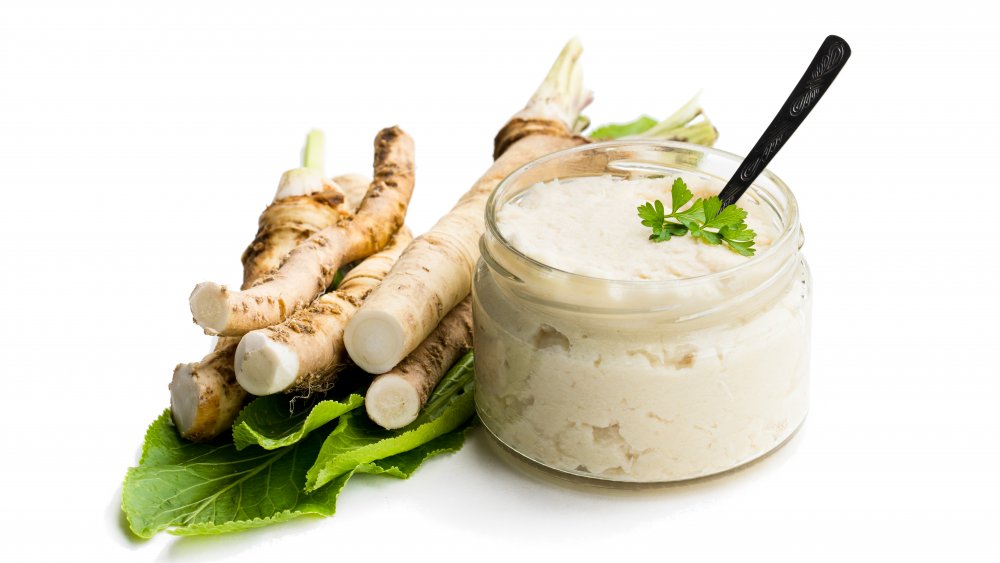Here's What You Can Substitute For Wasabi
Before we talk about wasabi substitutes, we need to talk about the stuff we know to be wasabi — that's right, the green paste which comes in tubes and pots, and which we use as a condiment to dress up sushi and sashimi by blending it into a soy sauce base. And while you may recognize the popular sushi condiment for its smell (and for the up-the-nose rush you get from eating too much of it), what you actually think is wasabi isn't actually wasabi at all.
HuffPost says most of the "wasabi" served outside of Japan is actually a mixture made with horseradish, mustard, and food coloring. If you're lucky, that mixture will have a bit of the wasabi root for which the condiment was named. That identical (or a similar) horseradish mixture can even be found in Japan, because the demand for real wasabi is high, and it is also incredibly difficult to grow (via Epicurious).
Horseradish and wasabi are cousins
Epicurious says horseradish and wasabi (which is, interestingly enough, also called Japanese horseradish) come from the same plant family as mustard, cabbage, broccoli, and Brussels sprouts. Both horseradish and wasabi, says U.S. commercial wasabi farmer Jennifer Bloeser, have "punch-you-in-the-nose heat," but wasabi has some additional notes of flavor — "It's got some floral components, a little sweetness," she said.
While horseradish grows quickly with a bit of prompting and care (and it thrives in Illinois), wasabi is difficult to grow outside Japan. Bloeser, who is with one of four wasabi growers in the U.S., says Japanese horseradish needs up to three years to mature, and it needs a microclimate that is unique to Japan, with features that include full shade, cool air, and plenty of water. All in all, it's a pretty rare crop, and even more scarce at the dinner table and on supermarket shelves. "Upwards of 95 percent of the powdered stuff on the market doesn't have real wasabi in it," Bloeser says.
The average sushi lover may not be able to tell the difference between horseradish and real wasabi, but HuffPost says the two are more different than people might think. Real wasabi has a more herbal flavor and does not leave a lingering, burning endnote. It is also meant to be cleaner, smoother, and more "herby."
Restaurant wasabi can be recreated at home
Because restaurant "wasabi" isn't real wasabi anyway, online cooks say its flavor isn't too difficult to replicate. Spiceography suggests you might be able to use prepared horseradish sauce, or a variety of mustard preparations, including English mustard powder and Chinese mustard powder as appropriate flavor substitutes.
If you have neither, spicy brown mustard will do too, since spicy brown mustard has less vinegar than the yellow hotdog mustard variety, which helps make it hotter. But even if you manage to find a preferred mustard or horseradish that delivers on flavor, it may be difficult to find something that matches your substitute on color... unless you're prepared to bling up your condiment with a dash of deep or neon green food coloring, that is.


